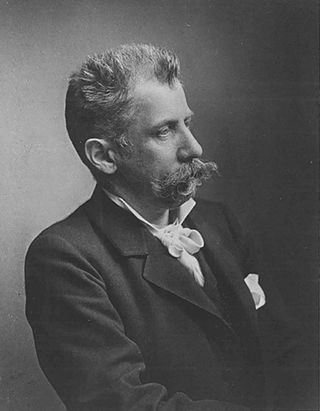
Max Littmann (3 January 1862 - 20 September 1931) was a German architect.

Max Littmann (3 January 1862 - 20 September 1931) was a German architect.




Littmann was educated in the Chemnitz University of Technology and the Dresden University of Technology. In 1885, he moved to Munich where he met Friedrich Thiersch and Gabriel von Seidl and where - after two study trips to Italy and Paris - he established himself as a free architect.
In 1891, he joined the contracting business of his father-in-law Jakob Heilmann, thus transforming it into the Heilmann & Littmann general partnership (later becoming a limited partnership), taking charge of the planning department. Littmann excelled in the erection of magnificent buildings, e.g. theaters, department stores and spas and was the perfect supplement to Heilmann, who had specialized in living house construction.[ citation needed ]
In February 1905, two department stores opened their doors in Munich, both designed by Littmann, who at that time had already achieved the status of a prominent architect in the city. The Kaufhaus Oberpollinger and the Warenhaus Hermann Tietz were both prominently positioned in central Munich near the München Hauptbahnhof (Munich Central Train Station). Littmann designed both department stores so that the exteriors were historicist, while the interiors provided consumers with a modern shopping environment. Littmann arranged both department stores around an atrium with a glass and iron cupola. Littmann also insisted on state of the art building techniques, such as reinforcing steel, and reinforced concrete. [1] Littmann hired renowned Munich artists to help with the design of the two department stores, including Heinrich Düll, Georg Pezold, and Julius Seidl. [2]
Even during his lifetime, Littmann was listed in the Encyclopaedia Judaica. His pedigree doesn't give any clue on his often referenced Jewish descent; rather, he is descended from a Protestant family in Oschatz (Saxony), which can be traced back for centuries.

Munich is the capital and most populous city of the Free State of Bavaria, Germany. With a population of 1,594,632 inhabitants as of 31 May 2024, it is the third-largest city by population in Germany, after Berlin and Hamburg, and thus the largest which does not constitute its own state, as well as the 11th-largest city in the European Union. The Munich metropolitan area – including suburbs and satellite towns – has 3 million inhabitants; and the city's metropolitan region is home to about 6.2 million people and is the third largest metropolitan region by GDP in the European Union.

Jugendstil was an artistic movement, particularly in the decorative arts, that was influential primarily in Germany and elsewhere in Europe to a lesser extent from about 1895 until about 1910. It was the German counterpart of Art Nouveau. The members of the movement were reacting against the historicism and neo-classicism of the official art and architecture academies. It took its name from the art journal Jugend, founded by the German artist Georg Hirth. It was especially active in the graphic arts and interior decoration.

Bad Kissingen is a German spa town in the Bavarian region of Lower Franconia and seat of the district Bad Kissingen. Situated to the south of the Rhön Mountains on the Franconian Saale river, it is one of the health resorts, which became famous as a "Weltbad" in the 19th century.
Heilmann & Littmann was a leading German contracting business.

Jakob Heilmann was a German contractor.

Bruno Paul was a German architect, illustrator, interior designer, and furniture designer.

The Munich Kammerspiele is a state-funded German-language theater company based at the Schauspielhaus on Maximilianstrasse in the Bavarian capital. The company currently has three venues: the main stage of the theatre with two small stages, the workroom on Hildegardstrasse, and the Therese-Giehse-Halle in the rehearsal building on Falckenbergstrasse.

Richard Riemerschmid was a German architect, painter, designer and city planner from Munich. He was a major figure in Jugendstil, the German form of Art Nouveau, and a founder of architecture in the style. A founder member of both the Vereinigte Werkstätte für Kunst im Handwerk and the Deutscher Werkbund and the director of art and design institutions in Munich and Cologne, he prized craftsmanship but also pioneered machine production of artistically designed objects.

The Schiller Theater is a theatre building in Berlin, Germany. It is located in the central Charlottenburg district at Bismarckstraße 110, near Ernst-Reuter-Platz.

The Kurtheater Bad Kissingen is a theatre in the spa town Bad Kissingen in Bavaria, Germany.

Spa architecture is the name given to buildings that provide facilities for relaxation, recuperation and health treatment in spas. The architecture of these buildings is called "spa architecture" even though it is not a uniform architectural style, but a collective term for a genre of buildings with a spa function.

Gabriel von Seidl was a German architect and a representative of the historicist style of architecture.

Ernst Haiger was a German architect.

Ignatius Taschner, also known as Ignaz Taschner, was a German sculptor, medalist, graphic designer and illustrator.

The Regentenbau is a German concert hall in the town Bad Kissingen in Bavaria.

The Hofstatt is a shopping mall that opened in 2013 in Munich's old town. The core of the building is the former site of the Süddeutscher Verlag, whose historical edifices are part of the design by architect Max Littmann on the Sendlinger Straße and the brick printing press building was also incorporated into the project.

Stollbergstraße 20, is a building located in the old town of Munich, Germany. The main and auxiliary buildings are part of the historical building ensemble of the old town.

The Holbeinstraße is a city center street in the Munich district of Bogenhausen.

Josef Flossmann was a German sculptor; associated with the Munich Secession.

The Oberpollinger is a well-known upscale department store on Neuhauser Straße in Munich. It is run by KaDeWe Group GmbH and is the largest department store in Southern Germany. The building was built in 1905 by Max Littmann in the style of Historicism in the form of the Neo-Renaissance and is a listed building.